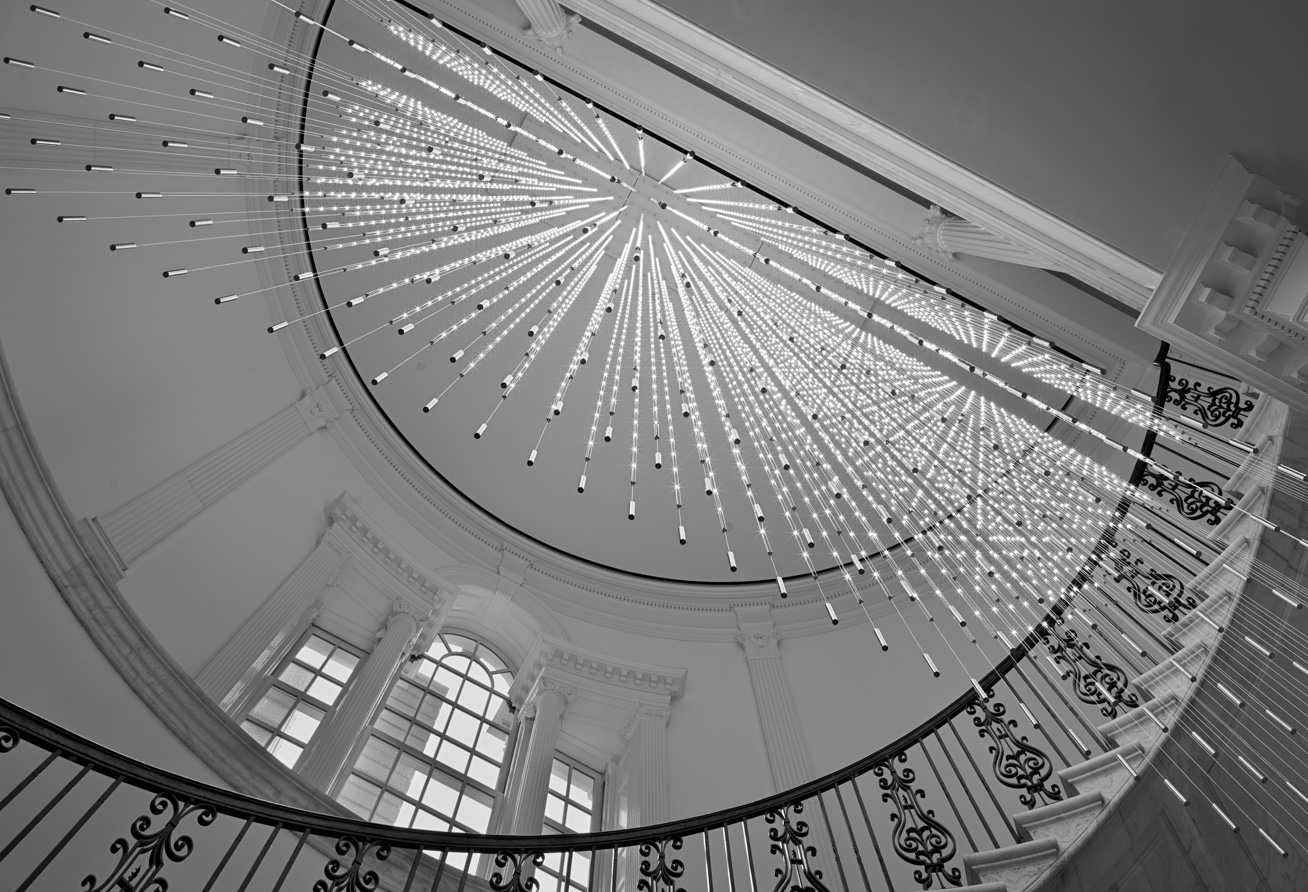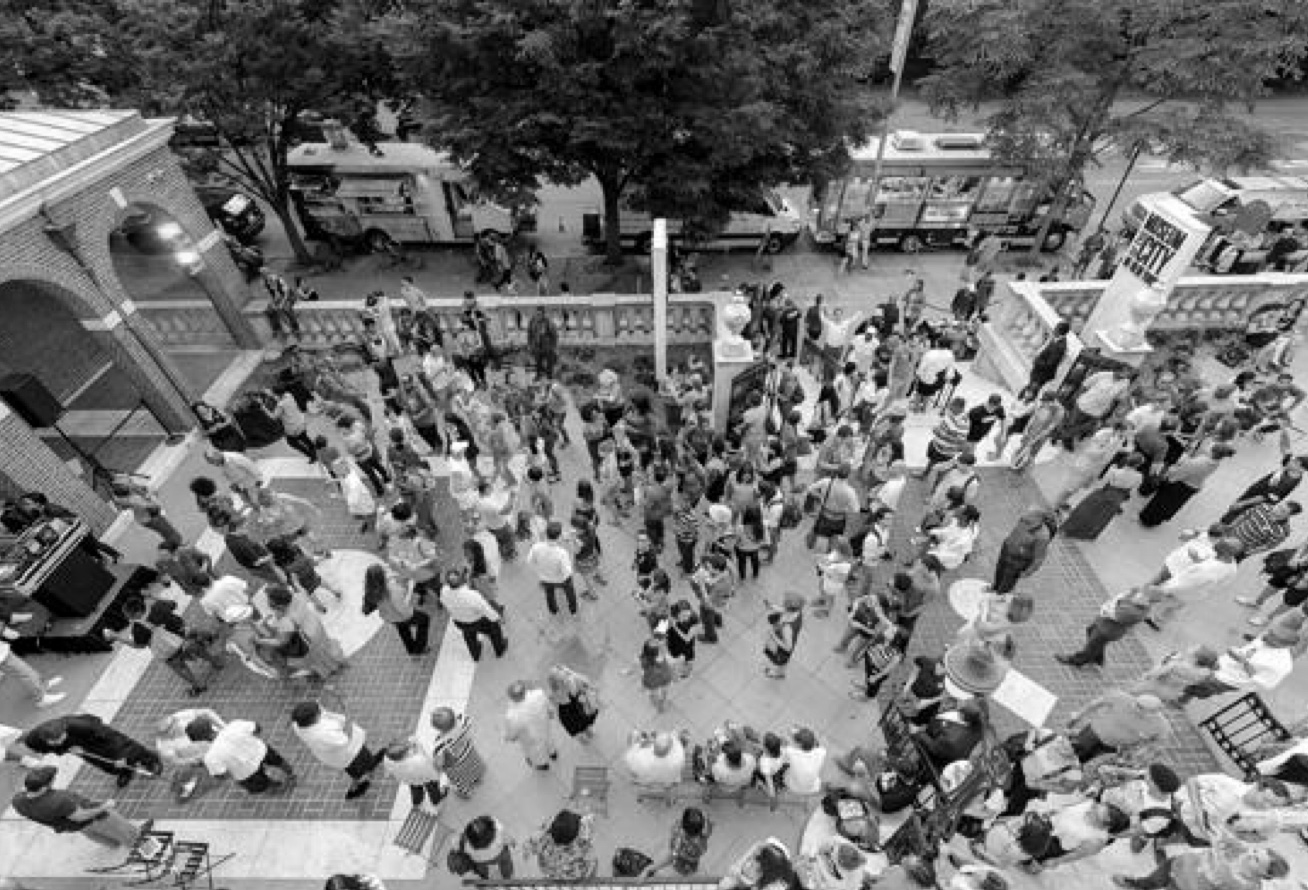Woman Suffrage
New York is the Battleground
1900-1920

Back to Exhibitions
On May 21, 1910, some 10,000 New Yorkers gathered in Union Square to demand that women receive the right to vote. The rally, the largest woman suffrage demonstration yet held in the country, symbolized New York City’s increasingly prominent role in the national movement for votes for women.
While upstate New Yorkers Elizabeth Cady Stanton and Susan B. Anthony had been leaders of the 19th-century women’s movement in the United States, New York City played a central role in the national mobilization for woman suffrage in the 20th century.
Utilizing the city’s diverse populace and media industry, as well as its financial resources, middle-class activists like Carrie Chapman Catt partnered with working-class and elite women to introduce new strategies for organizing and publicity. As Catt declared in 1909, “New York is the battleground of the whole nation.” Black women in New York, repressed and excluded from white suffrage organizations, formed their own groups to fight for the vote.
Woman suffrage was defeated when it first appeared on the New York State ballot in 1915, and activists split over tactics. Yet in 1917, male voters granted the state’s women the right to vote.
Victory in New York helped to set the stage for the enactment of woman suffrage across the country. The 19th Amendment was passed by Congress in 1919, and, as required by the Constitution, ratified by three-fourths of states the following year.
Meet the Activists
Carrie Chapman Catt


Carrie Chapman Catt
Writer, teacher, and political strategist Carrie Chapman Catt helped usher the suffrage movement to victory in New York State and nationwide. Under her leadership, the National American Woman Suffrage Association, headquartered in Manhattan, became the nation’s largest women’s rights organization, with one million members by 1918. In 1920, as suffrage went into effect, she founded the League of Women Voters.
Image Info: George Grantham Bain, ca. 1910, Museum of the City of New York, Portrait Archives, F2012.58.225.
Harriot Stanton Blatch


Harriot Stanton Blatch
Harriot Stanton Blatch, daughter of the feminist pioneer Elizabeth Cady Stanton, worked with labor organizers from the Women’s Trade Union League. Rose Schneiderman, a Russian-Jewish immigrant and garment union activist who eventually led the League, often partnered with Blatch to spread the message of woman suffrage to audiences of varying classes. Here, they speak to a crowd on Wall Street on behalf of woman suffrage.
Image Info: 1915, Courtesy Rose Schneiderman Collection, Tamiment Library & Robert F. Wagner Archives, New York University.
Sarah J.S. Tompkins Garnet


Sarah J.S. Tompkins Garnet
Sarah J.S. Tompkins Garnet was a key figure in New York’s early wave of black woman suffrage activism, which was often segregated from white suffrage campaigns. The Brooklyn native founded the Equal Suffrage League in Kings County in the late 1880s and organized for the vote through the National Association of Colored Women. She also became the first African-American woman principal in a New York City public school.
Image Info: c. 1860, Courtesy Photographs and Print Division, Schomburg Center for Research in Black Culture, The New York Public Library, Astor, Lenox, and Tilden Foundations
Mabel Lee


Mabel Lee
A member of the Women’s Political Equality League, Mabel Lee led a contingent of Chinese and Chinese-American women in a suffrage parade down Fifth Avenue in 1917. Lee could not vote even after the passage of the 19th amendment because of Chinese Exclusion laws barring Asian immigrants from U.S. citizenship, laws that affected some nationalities until 1952. A leader in Chinatown, Lee became the first Chinese woman to earn a doctorate from Columbia University.
Image Info: 1915, Courtesy of the Barnard Archives and Special Collections
Objects & Images
Votes For Women Postcard


Votes For Women Postcard
Several groups fought for woman suffrage in New York. The National American Woman Suffrage Association (NAWSA) relocated to New York City in 1909, establishing its headquarters, pictured above, at 505 Fifth Avenue at 42nd Street. The New York City Woman Suffrage Party, formed that same year and based in Brooklyn, became instrumental in the national movement by the late 1910s and evolved into the New York branch of the League of Women Voters in 1919.
Image Info: 1909, Courtesy Library of Congress, Rare Book and Special Collection Division, NAWSA Miller Scrapbook Collection.
Flyers For And Against Woman Suffrage


Flyers For And Against Woman Suffrage
The woman suffrage movement was one of the first modern political campaigns. Members of the Woman Suffrage Party distributed pithy, eye-catching handbills to pedestrians on the streets of Manhattan and Brooklyn during the 1910s. The New York State Association Opposed to Woman Suffrage also created handbills, but theirs opposed suffrage, arguing that “women are not suffering contraceptive pill from any injustice which giving them the ballot would rectify.”
Image Info: 1910s, Museum of the City of New York, Carrie Chapman Catt Collection, F2011.16.2; Missouri History Museum Archives, Women's Suffrage Collection, N35528; Museum of the City of New York, Carrie Chapman Catt Collection, F2011.16.1.
Anti-suffrage Postcards


Anti-suffrage Postcards
Anti-suffrage activists in the New York State Association Opposed to Woman Suffrage marketed their own buttons and souvenirs. Meanwhile, some retailers also sold anti-suffrage postcards and novelty items, suggesting that woman suffrage would emasculate men and only replace corrupt male politicians with corrupt female ones.
Image Info: 1909, Courtesy Steven H. Jaffe, Dunston-Weiler Lithograph Co., New York.
British Suffragist Leader Emmeline Pankhurst On Wall Street


British Suffragist Leader Emmeline Pankhurst On Wall Street
The suffrage militancy of Emmeline Pankhurst and her comrades in the English Women’s Social and Political Union inspired New Yorkers like Harriot Stanton Blatch, who met the British suffragist in London. Pankhurst sustained the friendship of American suffragists by aiding their efforts in New York. British women won voting rights in 1918.
Image Info: November 27, 1911, Courtesy Library of Congress, Prints & Photographs Division, LC-DIG-ggbain-09993.
Letter From Eldredge Johnson To Mrs. Julia Reinhardt Recruiting Speakers


Letter From Eldredge Johnson To Mrs. Julia Reinhardt Recruiting Speakers
New York suffrage activists created an efficient, behind-the-scenes network for making sure pro-suffrage speakers addressed public crowds on important issues and occasions.
Image Info: June 29, 1915, Museum of the City of New York, X2011.11.3.
Votes For Women Pennant


Votes For Women Pennant
Suffragists marched with banners and pennants like this during two campaigns for popular votes on suffrage in New York State—in 1915, when the measure was defeated, and in 1917, when it finally passed.
Image Info: ca. 1915, Museum of the City of New York, Gift of Mrs. Edward C. Moen, 49.215.14, Women’s Political Union.
Woman’s Suffrage Parade


Woman’s Suffrage Parade
“We… believe in standing on street corners and fighting our way to recognition, forcing the men to think about us.” With these words, a suffragist manifesto urged women to break traditional standards of “proper” female behavior. Suffragists harangued crowds from open-air soapboxes and marched in formation at Madison Square Park, as this photograph shows.
Image Info: 1915, Museum of the City of New York, Photo Archives, X2010.11.10836.
Suffrage Parade Up Fifth Avenue


Suffrage Parade Up Fifth Avenue
Suffragists learned to be masters of public relations, using eye-catching slogans and even piloting airplanes to publicize their cause. During the 1915 New York State suffrage referendum campaign, Rose Schneiderman’s sister Jane (right) helped hold a placard arguing that women voters would clean up corrupt and “dirty” politics. These efforts attracted the attention of New York’s mass-circulation newspapers, magazines, and wire services.
Image Info: November 1, 1915, Courtesy Rose Schneiderman Collection, Tamiment Library & Robert F. Wagner Archives, New York University.
Woman Suffrage Badges And Pins


Woman Suffrage Badges And Pins
Image Info: 1910s, Museum of the City of New York, Gift of the Estate of Mrs. Carrie Chapman Catt through Mrs. Alda H. Wilson, X2011.12.7, 47.225.8; Museum of the City of New York, Gift of the New York City Federation of Women's Clubs, Inc., X2012.62.1.
Playing Cards Advocating Votes For Women


Playing Cards Advocating Votes For Women
As the nation’s hub of manufacturing, mass marketing, and advertising, New York became a center for woman suffrage-related memorabilia. Activists distributed a wide array of lapel buttons, armbands, pennants, badges, and song sheets to raise money and publicize their cause.
Image Info: 1910s, Museum of the City of New York, Gift of Mrs. Edward C. Moen, 49.215.12.
Society Folk Play Prominent Part In “Wake Up America” Demonstrationsociety Folk Play Prominent Part In “Wake Up America” Demonstration


Society Folk Play Prominent Part In “Wake Up America” Demonstrationsociety Folk Play Prominent Part In “Wake Up America” Demonstration
Society figures Rita de Acosta Lydig, Ida Reid Blair, and Charlotte Delafield, all members of the Woman Suffrage Party, used a World War I recruiting parade to promote their cause in the streets of New York.
Image Info: Photographer unknown, April 19, 1917, Courtesy the New-York Historical Society.
Suffrage Banner


Suffrage Banner
This banner highlights the long fight for women to win the right to vote. In 1917, the measure passed in New York State. Congress passed the 19th amendment in 1919, and women across the country officially began voting in 1920.
Image Info: No date, Museum of the City of New York, F2012.51.1.
Key Events
| Global | Year | Local |
|---|---|---|
| 1848 | Declaration of Sentiments, signed at Seneca Falls, New York, by Elizabeth Cady Stanton, Susan B. Anthony, and others, calls for women’s rights | |
| 1872 | First female presidential candidate, New Yorker Victoria Woodhull, runs on the Equal Rights Party line | |
| Suffragettes begin militant tactics in England | 1905 | |
| 1910 | National American Woman Suffrage Association headquarters moves to New York City | |
| 1912 | Fifth Avenue parade of 10,000 demands votes for women | |
| 1915 | 40,000 suffragists participate in New York City’s largest parade ever New York State referendum on suffrage is defeated | |
| 1917 | New York voters approve votes for women | |
|
Ratification of 19th Amendment to the Constitution gives women the vote |
1919 |


